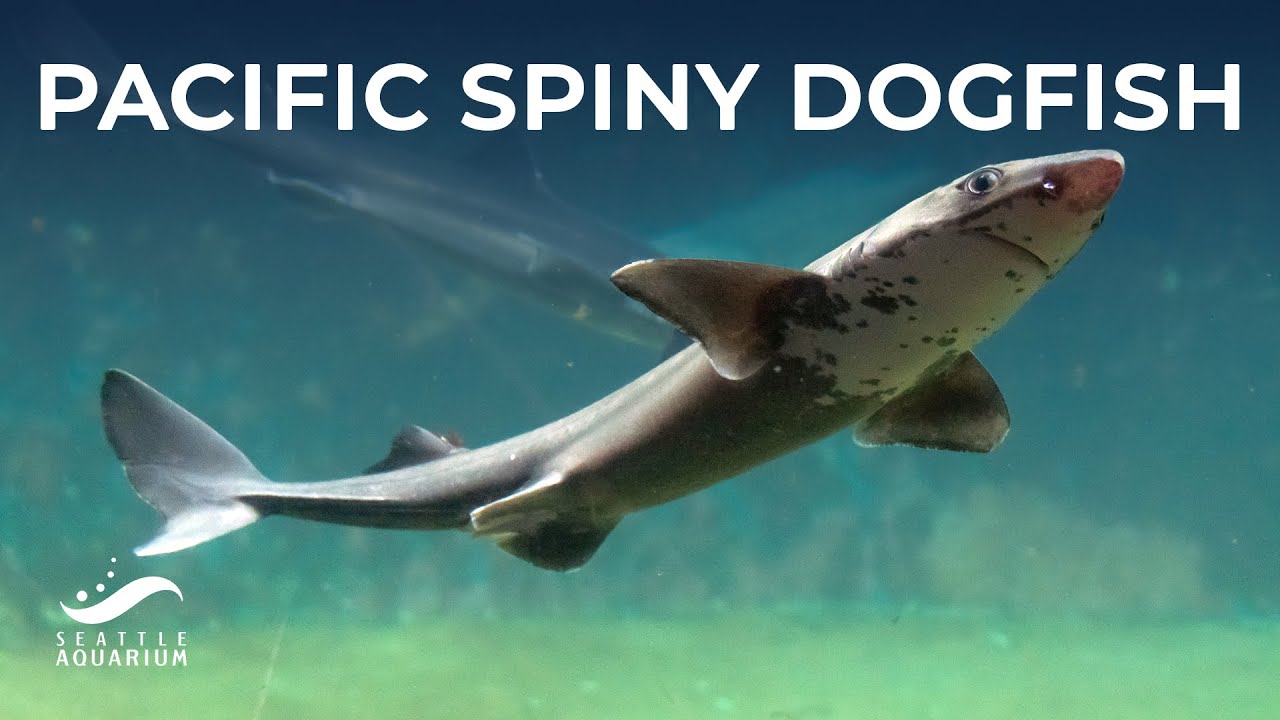Summary:
1. The Pacific Spiny Dogfish is a small, bottom-dwelling shark on the northern Pacific and Atlantic coasts.
2. Dogfish can travel long distances and inhale various habitats, from deep depths to shallower waters.
3. They live for over 40 years and have even been known to live up to 70 years in the Pacific.
4. Dogfish hunt in schools and feed on small fish, jellyfish, clams, krill, octopus, and squid.
5. Dogfish are venomous, with two spines that secrete a mild venom, serving as a defense mechanism.
All About Pacific Spiny Dogfish – Shark and Ray Awareness Day
The Pacific Spiny Dogfish is a fascinating and unique shark species that deserves our attention and admiration. On Shark and Ray Awareness Day, we look at these small, bottom-dwelling sharks and appreciate their significant role in the ecosystem.
Swimming in schools:
One of the most intriguing aspects of dogfish behavior is their tendency to swim and hunt in schools. Picture a school of up to 1,000 dogfish swimming together synchronized and coordinatedly. This behavior makes them more efficient hunters and increases their chances of capturing prey. Despite their small size, dogfish are skilled predators, feeding on various marine organisms, including small fish, jellyfish, clams, krill, octopus, and squid.
The vicious nature of dogfish:
Unlike most sharks, dogfish possess an additional defense mechanism that sets them apart – venomous spines. These spines secrete a mild venom in front of each dorsal fin. The purpose of these venomous spines is to deter predators, such as sixgill sharks and seals, from attacking. This adaptation showcases the incredible diversity found within the world of sharks and highlights their ability to thrive in different environments.
Conservation efforts for dogfish:
As keystone predators, dogfish play a crucial role in their ecosystem. Unfortunately, their populations have been threatened due to a variety of factors. Historically, dogfish have been misunderstood and subjected to overfishing. Their populations are further impacted by pollution, predation, and a lack of prey. We must understand their life cycle and reproductive patterns better to implement sustainable fisheries management strategies that protect this vital species.
How can we help dogfish?
1. Raise awareness: Join Shark and Ray Awareness Day by sharing this article and spreading the word about the importance of dogfish conservation.
2. Support sustainable fisheries: Choose seafood from sustainable sources and avoid supporting fisheries that contribute to dogfish depletion.
3. Reduce pollution: Take steps to reduce pollution in our oceans, such as reducing single-use plastics, properly disposing of waste, and supporting organizations working towards cleaner oceans.
4. Educate others: Share your knowledge about dogfish and the importance of their conservation efforts. Inspire others to take action and make a difference.
5. Support organizations: Get involved with organizations like the Association of Zoos and Aquariums that tirelessly protect and conserve marine life, including dogfish.
In conclusion, the Pacific Spiny Dogfish is not just a small, bottom-dwelling shark. They are fascinating creatures that contribute to the balance of our marine ecosystems. By understanding their behaviors, appreciating their unique adaptations, and taking steps to protect their populations, we can ensure a healthier future for dogfish and the entire marine environment.
On Shark and Ray Awareness Day, let us come together and commit to inspiring conservation and protecting the Pacific Spiny Dogfish. Through collective efforts, we can preserve nature’s wonders for future generations to enjoy. Expand your knowledge, share your passion, and become part of the solution. Together, we can make a difference.
*****
Source Description
Dogfish are small, bottom-dwelling sharks that live along the northern Pacific and Atlantic coasts. They can travel long distances, and their habitat can range from dark depths of 3,000 feet to shallower waters receiving ample sunlight. Dogfish can live for over 40 years; in the Pacific, they have even been known to live as long as 70 years.
Swimming in schools: Dogfish often hunt in schools. These schools can have up to 1,000 dogfish. Because of their relatively small size, dogfish usually eat small fish and jellyfish, clams, krill, octopus and squid.
A venomous shark: Like all sharks, dogfish have skin covered in tooth-like scales called denticles. But unlike most sharks, dogfish are also venomous. They have two spines in front of each dorsal fin that secrete a mild venom. These sharp spines serve as a defense mechanism against the dogfish’s predators, such as sixgill sharks and seals.
How to help dogfish: Dogfish are keystone predators and ecologically important in their niche. Like many sharks, they have been historically misunderstood and overfished. Currently, some populations are threatened due to a conflux of factors, including their natural predators, a lack of prey, and their popularity as seafood in Europe. One key factor to their threatened status is the fuzzy picture we have of their life cycle: specifically, how long it takes for them to become mature, how many times they can reproduce, and how long they live—all factors critical to setting up a sustainable fisheries management system. And, like all ocean life, dogfish are adversely affected by pollution. Keeping our ocean clean will help dogfish survive.
For more Shark and Ray Awareness Day videos, visit the Association of Zoos & Aquariums Facebook page: https://www.facebook.com/watch/71291813882/230989362203649/.
—–
Join us in our mission of Inspiring Conservation of Our Marine Environment!
Subscribe to our channel https://www.youtube.com/subscription_center?add_user=seattleaquarium
Visit us on the web: https://www.SeattleAquarium.org
Facebook: https://www.facebook.com/Aquarium.Seattle
Twitter: https://www.twitter.com/SeattleAquarium
Instagram: https://www.instagram.com/seattleaquarium
#sharks #shark

